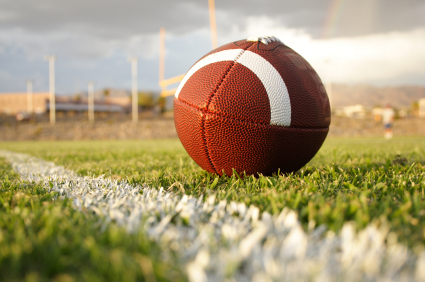NCAA Failing at its Own Mission
According to the organization’s history, the NCAA was “founded in 1906 to protect young people from the dangerous and exploitive athletics practices  of the time.” The organization was formed based on concerns about ‘the rugged nature of early-day football” and that “football was run by student groups that often hired players and allowed them to compete as non-students.”
of the time.” The organization was formed based on concerns about ‘the rugged nature of early-day football” and that “football was run by student groups that often hired players and allowed them to compete as non-students.”
Exploitive athletics practices?
Non-students competing?
Exploitive Athletics Practices
The NCAA basketball tourney, affectionately dubbed “March Madness” or “The Big Dance,” raised in excess of $600 million in ad sales for the 2010 Tournament. In contrast, the only sporting event that raised more dollars was the NFL Playoffs and its culminating Super Bowl – $793.8 million.
The NCAA men’s basketball tournament tally of $613.8 million nearly matched the totals of the other two major professional sports leagues combined (NBA Playoffs and Finals – $417.7, MLB Playoffs and World Series – $345.3).
Dr. Boyce D. Watkins, a leading social commentator, goes beyond calling the current college athletic structure exploitative. Dr. Watkins insists that “NCAA is engaging in a form of academic apartheid.” After all, most of the “individuals doing the work to earn this income are African American, and those receiving most of the economic benefits just happen to be white.”
Somehow, as Dr. Watkins notes, the NCAA would have everyone believe that “a scholarship” and a “pair of sneakers” is somehow “Quid pro Quo” for the tens of millions of dollars these players bring in.
Exploitive athletics practices?
Non-students Competing
 According to the Institute for Diversity and Ethics in Sports, this year seven teams in the NCAA tournament posted a 100 percent Graduation Success Rate: Belmont, Notre Dame, Villanova, Wofford, Illinois, BYU, and Utah State. But that was clearly the exception.
According to the Institute for Diversity and Ethics in Sports, this year seven teams in the NCAA tournament posted a 100 percent Graduation Success Rate: Belmont, Notre Dame, Villanova, Wofford, Illinois, BYU, and Utah State. But that was clearly the exception.
Consider the following graduation rates for some of the other participants: these 25 would receive an F if we were to use the standard ten point college grading scale:
Arizona 20%, UAB 25%, Connecticut 31%, Temple 33%, Georgia 36%, Michigan 36%, Akron 38%, Kansas State 40%, Tennessee 40%, Texas 42%, Southern Cal 42%, Morehead State 43%, Florida 44%, Kentucky 44%, Missouri 44%, Washington 44%, Louisville 50%, Michigan State 50%, North Carolina Asheville 50%, Texas San Antonio 50%, Cincinnati 53%, Syracuse 54%, Virginia Commonwealth 56%, Memphis 58%, San Diego State 58%.
Another ten would receive a D (60-69): Alabama State, George Mason, Hampton, Indiana State, Ohio State, Old Dominion, Pittsburgh, Purdue, Texas A&M, and UNLV.
Non-students competing?
From the same report, 30 men’s tournament teams (54 percent) had a 30 percentage point or greater gap between white basketball players graduation rates and those of African-Americans.
Exploitive athletics practices?
NCAA Today
The issues may be different but the context is the same. College athletics has once again lost its way (as it did back at the turn of the prior century) it’s just that this time the organizing body is in the middle of the issue.
The absurdity of the current situation now has people calling for the players to be paid and for the colleges to offer a major in the sport that the athlete participates in. Neither of these make sense if one hearkens to the essence of college athletics and the idea that these games are supposed to feature amateur student-athletes.
But therein lies the rub – that notion is no longer even remotely applicable when it comes to the NCAA in its two major revenue sports: football and basketball. The NCAA long ago slid down a path into an entertainment industry that features non-students playing the lead role.
And the organization seems perfectly content with the current exploitation of those willing to play the role.

